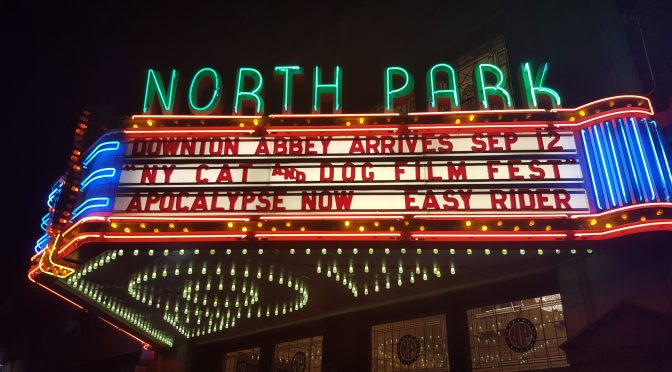It has been over 30 years since viewing Apocalypse Now in its entirety. I was 12 going on 13, sitting in my bedroom, watching the film on an old Sony 13-inch Sony Trinitron television manufactured around the time of the film’s production. Lacking a remote control, the television could only be adjusted manually through to separate UHF and VHF dials. Unlike the UHF dial which needed fine-tuning, with just a few clicks, the number seven on the dial framed the orange glow of the light illuminating from behind the dial. the unseasonably cool temperature made it seem like back-to-school time was near, even though the ample sunlight that extended well into the evening suggested otherwise.
Strangely, the film was broadcasted during a time slot crammed between the evening news and prime-time network TV, usually reserved for overlong infomercials. Unlike other films of its magnitude, the airing was not backed with a “network-television-debut” lead-in, nor was there an”interruption-of-regularly-scheduled-programming” announcement, it was simply presented by ABC’s Buffalo affiliate, WKBW with little – if any – introduction.
Watching the edited-for-American-broadcast-television version on the small screen was still enough to capture my attention as a preteen and has left a lasting impression to this day. From the visually-stunning opening montage featuring jungle palm trees set ablaze by napalm bombs from above to the parting words of Colonel Kurtz (Marlon Brando) in the final scene, the pacing, editing, and cinematography had my face glued to the tiny screen throughout.
Last Wednesday night I had the opportunity to see Apocalypse Now: Final Cut in the more appropriate, cinematic setting of a roaring-twenties-era, single-screen theater. Though I missed the 2001 Apocalypse Now: Redux version, which flew under my “must-see radar” at the time, I reserve a seat in advance, spending my Wednesday night celebrating the 40th anniversary of the film’s original release by viewing Coppola’s cinematic masterpiece again for the first time on the big screen – the way it was intended.
The opening scene of the film appeared bolder and brighter than I could recall properly proportioned in an infinitely wider aspect ratio along with several of its most iconic scenes, however, unlike the original release, the film’s theme and plot veered off course momentarily with the scenes featuring French expatriates seemingly lost in time, who stayed behind following France’s withdrawal in the mid 1950s.
Like a history class lesson plan gone awry, Apocalypse Now: Final Cut not only attempts take on the “journey into the madness of war,” consistent with the Joseph Conrad novella Heart of Darkness, but meanders into different subplots, themes, or objectives which blur the viewer’s focus from the movie’s central theme and plot. Though historical accuracy and authenticity cannot be under emphasized in period pieces such as Coppola’s Vietnam-war-era odyssey, the scenes featuring the chance encounter with French settlers living on borrowed time in the land they once knew as Indochine seemed like a misguided lesson in history which hindered the film’s continuity and narrative.
Following the death of “Clean” (Lawrence Fishburne), Captian Willard’s (Martin Sheen) crew is accosted by French soldiers left behind after the french withdrawal a decade before. The soldiers soon realize that Willard and his crew members are American troops and lead them to an estate of a French plantation family. It is at this point the film veers off coarse when Willard engages in a conversation with the displaced family on Vietnam’s colonial past under French rule over dinner.
The French plantation sequence seemed composed of footage edited long after film post-production that was intended for a sequel left unfinished. In addition, film’s thematic continuity apparently was interrupted further with subtle nuisances such as a change in the music score which Francis Coppola may have hastily composed and produced himself without father Carmine’s input, after his death.
Overall, Apocalypse Now: Final Cut was a captivating full-speed-ahead cinematic experience derailed by the French-plantation subplot, making what once was a captivating non-stop journey into the darkness of war come to a screeching halt two-thirds into the film for a lecture on French colonialism in Vietnam. Despite the Redux and updated Final Cut’s attempt to boldly go where no American-motion-picture production has gone before, into the depths of the region’s pre-Vietnam-War past, the plantation sequence seemed nothing more than an a self-defeating, cut from the action or “wind from the sails” of an otherwise exhilarating narrative and plot that flowed as smooth as the river waters featured throughout the film. Had the sequence been featured in Blu-ray format, it would have been suitable for supplemental viewing before or after watching the original cut in its entirety, however, spliced within film’s second and present-day cut seems out of place, making Apocalypse Now: Final Cut a minor disappointment on the big screen but more appropriate for private viewing by home-theater film aficionados.
Apocalypse Now: Final Cut is available in remastered 4K on Blu-ray.
